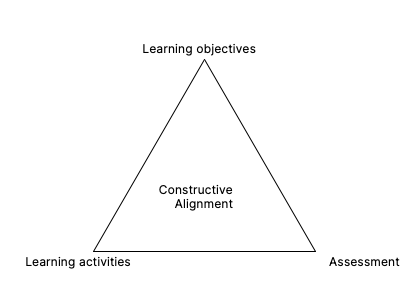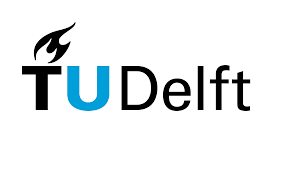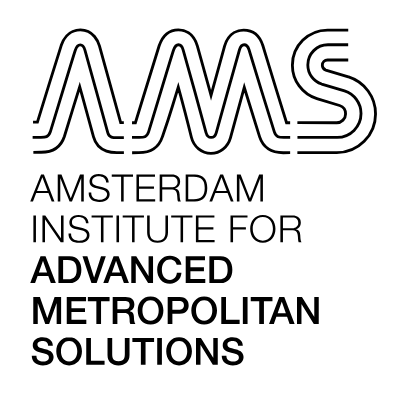TECHNICAL RESILIENCE:
A FIT FOR PURPOSE FRAMEWORK FOR A DECADE
—“How can I integrate a resilient approach to teaching in these times?
A surprising answer was provided by StudioBlended. Tikvah coached me in making my educational approach and impact last longer.
I realized that acquiring knowledge is a process that obeys the rules of resilience very strongly.”
Dr. Alexander Jachnow, Urban Researcher and Strategist
Institute for Housing and Urban Development Studies (IHS), Erasmus University, Rotterdam
“Foremost, I feel very at ease knowing that Tikvah is not only an educational advisor but also someone who truly understands the urban development field. It was an enjoyable co-creation experience not starting from zero but maximizing the learnings and experience of the course implementation in the previous years.”

Specialist in Urban Land, Housing Development and Capacity Building
Course Manager, Sustainable Urban Development (SUD)
Institute for Housing and Urban Development Studies (IHS), Erasmus University, Rotterdam
Are you curious for more? Would you like to get in touch? Feel free to contact our lead directly for any questions or inquiries you may have. tikvah@studioblended.com +31 6 42 47 29 69

Our technical approach to curriculum design is based on ‘constructive alignment’. You achieve it with backward design, which has proved to be a robust technique for design. Source image: Biggs, J., & Tang, C. (2011). Teaching for Quality Learning at University. Maidenhead, UK: Open University Press.
Technical Resilience
When you design a curriculum, you would like it to lead to effective learning and ensure that your time, energy and cost investments make sense over a longer period of time. At our Studio we call this design quality ‘technical resilience’. We advise you on how you can design for an effective and resilient curriculum that lasts up to a decade - even if your subject area experiences paradigm shifts and transitions and therefore requires you to rejuvenate content regularly. Our open building approach to technical resilience is cutting edge, and allows you to enjoy the benefits of delivering a mature course/training, including its impact on educational results and accreditations.
How is our Studio different from any other educational specialist you will find at your own campus or beyond? We are unique in our approach: we bridge the silo between your content field and the educational realm of expertise. Not only do we come alongside you to advise on your educational design, we partner with you with a broad comprehension of your field. This is how we design a fit for purpose framework for the curriculum with you, relevant for a decade.
Steps to be taken for a technically resilient framework:
1. Strategise the scope of your content (paradigm shift and hype cycle analysis)
2. Articulate guiding questions for your course to set direction and raise curiosity, exposure and wonder
3. Establish the big ideas of your content domain, with sufficient generative pedagogical power
4. Craft ‘understandings’ and ‘knowledge’ learning goals, expressed as 10 statements each
5. Balance this body of knowledge with domain skills and human capabilities
6. Ensure constructive alignment - from learning objectives to formative/summative assessment and activities
7. Craft the fit for purpose framework into ‘simplicity’ so that you can use it for ‘open building’. Make hard choices, determine dosage, both for evidence-based effective learning, and to do justice to your expertise.
Read more about our (re-)design studio.

Click to expand, and get a full illustration of our ‘fit for purpose‘ framework for technical resilience in your course curriculum. Such a framework allows for ‘open building’ such as with modular approaches to education.
Scroll down to discover more about ‘fit for purpose’, big ideas and our key projects.
Curios? Feel free to contact our independent senior advisor directly:
tikvah@studioblended.com
Fit for purpose
Allow our Studio to come alongside you and give you bespoke advice for a fit for purpose framework for your unique course/degree.We see an analogy with land cadastres. We identify the way your curriculum works within a relatively short time and at relatively low costs and then propose a robust and resilient framework as you continue to develop and deliver your course or training.
This enables you to begin to work regardless of the overall context as you find the optimum way to apply the framework in your unique environment, improvise with technique, and innovate. The framework allows for ‘open building’ with your education, such as in modular approaches.
Our bespoke ‘Fit for purpose’ stands strong for up to a decade ahead, and is able to incorporate ongoing development in the content. As such it also guides sound financial health for the course in terms of ensuring investments are smart (i.e. what to develop, when?).

Image: hand drawings on the cover of Las Tres Esperanzas, 2020, project of the Ecuadorian architectural Studio Al Borde. Technical perfection: the pencil - it keeps its qualities in whatever context or time period (by Philippe D'Averio). Analogy explanation by an Italian technical architect (AM).
By now our fit for purpose framework is simple, and technically perfect - like a pencil.
What is technical perfection?
It means that it keeps its qualities in whatever context.
If you throw it in water, and allow it to dry it can still write.
Should you keep it for a decade, and then try it again: it writes. It is perfect. Which is why it is not further developed, you just see variations of pencils, no difference in the original design.
It is already technically perfect.
Likewise, our fit for purpose framework for curriculum design is technically perfect.
Decade strong / Big ideas
By
far the most interesting component of the fit for purpose framework today are
the big ideas. They are the backbone of time robust design. We argue
that you just need up to some 10 for your entire curriculum or perhaps even the
entire degree. They best resemble exit goals of your course or degree,
that you arrive at over time. They need 1 – 2 words.To be elegant and powerful, your curriculum design must be coherent and focused on clear and worthy intellectual priorities – the ‘big ideas’. The challenge then is to identify the few big ideas and carefully design around them, resisting to teach everything of possible value for each topic.
Big ideas resonate with the current experienced ‘hangover’ feeling among scholars and practitioners that is the result of decades of too tightly formulated learning outcomes and objectives in the design of curricula – and the felt need for teaching to take centre stage again in Higher Education.
A big idea may be thought of as a linchpin – the device that keeps the wheel in place on an axle. It avoids the curriculum is just bits and pieces of facts that cannot take us anywhere.
‘Big’ is not nececarrily intelectually vast, but pedagogically powerful, and ‘points to the ‘core’ of the subject – they need to be uncovered, we have to dig deep until we get to the core.
Big ideas are hard won results of inquiry, ways of thinking and perceiving that are the province of the expert. They are not obvious, in fact, most expert big ideas are abstract and counterintuitive to the novice [learner], prone to misunderstanding.
Which concepts carry through time in your domain? How can you use big ideas to actually innovate your existing academic curriculum? How can you be strategic amidst paradigm shifts and hype cycles in your field?
Identifying big ideas is especially hard. ‘Framing big ideas is [also] not simple.’ (...) Or as Mitchell (Mitchell et al. 2026, p. 6) and his research team conclude: ‘Our experience shows that if big ideas are to be framed differently and not merely extricated from curriculum documents, textbooks or even research papers, then teachers need to be supported in developing these big ideas.‘

Image [click to expand]: The hype cycle of ‘big ideas’. A co-lab between Tikvah Breimer and Lucas Rampazzo to visualize and transform our understanding of a paradigm shift to help us set a decade proof scope for a course’s content, or even of a degree. The cycle of 20-30 years is true for the urban field, and may vary for other knowledge domains. For a deeper discussion of paradigm shifts see Breimer (2006). Use of original hype cycle and X-curve with permission by authors, Davidson and Drift, Rotterdam (NL), respectively. Find their reference at the bottom of this page.
 Breimer, Tikvah 2015.
Informal Urban Expansion: Anticipation and Preparation. Workshop Urbanisation
in Europe and the World. Joint Research Centre (JRC)
of the European Commission in Ispra, Italy, May 28. Includes the hype cycle of
concepts and a paradigm shift by Davidson (1999) [slide 7-11].
Breimer, Tikvah 2015.
Informal Urban Expansion: Anticipation and Preparation. Workshop Urbanisation
in Europe and the World. Joint Research Centre (JRC)
of the European Commission in Ispra, Italy, May 28. Includes the hype cycle of
concepts and a paradigm shift by Davidson (1999) [slide 7-11].
Related projects
On Friday August 30, 2024, Tikvah Breimer (MSc MAEd MSc) had the great honor to join the academic teaching team of MSc Metropolitan Analysis Design and Engineering (MADE) at the Amsterdam Institute for Metropolitan Studies (AMS) to kick-off the new academic year, and deliver a keynote coupled by a group excercise around strategizing and envisioning 'big ideas' in the Master's curriculum - in order to be equipped to simplify and innovate.“It was inspiring and fruitful [for me as participant]. I realised a course has baseline building blocks versus the trends and hypes that come and go. I realised where to invest in most. I am taking this further for my own field for sure.”
dr. Roberto Rocco
Senior Associate Professor of Spatial Planning and Strategy at TU/Delft Faculty of Architecture and Built Environment, Governance specialist focusing on Spatial Justice and Governance for Just Transitions.

“It was unexpected. We prepared thoroughly in our conversations beforehand, and even so you were able to surprise me. Instead of themes we would have grouped in a very concrete manner, it was all much more layered and strategic. Much more academic than I expected - for the good. We identified undercurrents, hypes and baselines and all in all created much more depth. It was really useful to look at our program like this - the graphical output we received, shows rising and declining lines that require attention - which words/concepts are we going to use, and which aspects do we need to adjust in the background? Merely producing some themes with the team would have been irrelevant to me - what we did now, truly gets us further in the coming year as we reimagine the program. I got what i needed.”
Dr. Stefan van der SpekAssociate Professor of Urban Design at TU/Delft Faculty of Architecture and Built Environment, Program Director of MSc MADE at AMS Institute and co-director of VR-BK at BK-LABS

Join related studies / Our Audio Podcast

🎙 Keynote: Big ideas and modular curriculum design.
Prefer to read? Transcript
Listen on: Acast Spotify Apple
Release summer ‘24

Prefer to read? Looking for resources? Transcript
Listen to A) dosage on: Acast Spotify Apple Listen to B) slow productivity on: Acast Spotify Apple
Release March 20 / June 21 ‘23
The episode comes in two clips: A) dosage (technical effectiveness) B) slow productivity (human resilience), the transcript is combining both clips.
In this episode, we tackle the problem over so-called ‘overload’ in terms of content in your curriculum. Perhaps to your surprise, we will link it directly to how you prepare for the content in your curriculum design, whether it is a module, course, training or a degree.
We go even beyond that: with technique - you can design for your own human resilience during preparation; your balance, your enjoyment of the simplicity in curriculum design.
Related publications

Our lead and founder, takes a lively interest in architecture, and made an extensive exploration of the open building approach in architecture (with distinction) at the Institute for Housing and Urban Management (IHS) of Erasmus University Rotterdam.
On Icaruswings.
Thesis (Masters) about subsequent student generations in Nicaragua and their ideas for legitimate democratisation in their own country. It is an in-depth, both through theory on generations and through participatory observations, study of what it means to experience paradigm shifts first hand and how to then understand that at a meta and macro level.
Cum laude. Thesis of the year award, Anthropology and Sociology of Non-Western Countries, University Utrecht, 2006.
More design angles we use
Technical resilienceHuman resilience
Modular
Time dimension
Evidence-based design
Financial health and resilience by (re)design
Innovative and deep pedagogy
Multi- Inter- and transdisciplinary
Blended
Bichronous
Designed to be green (and technological simplicity)
Nature and aspirations
Flexibilisation and personalisation
Simplicity and decluttering

Photo: Brazilian Brutalism at FAU USP, a University Faculty that defined its own Architectural Style. Flickr user Fernando Stankuns.
“I received alongside advise on my course design by Tikvah Breimer, and now deliver the actual course.
I feel secure the material is solid and lasting, so I can build on it, incrementally.
I dare to learn by doing, everything you (Tikvah) said is true – I’m calmer, more self-confident, and daring to experiment more. The structured approach the course brought, now brings me deep excitement to keep growing and learning myself too, not just students. It’s so rewarding.
You are so right we don’t need more heavy and extensive technology for excellent higher education,
We need excellent technique and pedagogy, resilience.
I feel secure the material is solid and lasting, so I can build on it, incrementally.
The advisory and training was a gift from heaven. I want you to train our entire team of professors!”
prof. dr. Patricia Samora
Senior lecturer and researcher
Pontificia Universidade Catholica de Campinas
Faculty of Architecture and Urbanism
Greater Sao Paulo Metropolitan Area
Brazil

We are here especially for you as unique professional, to come alongside you and partner with you, as you work on a (architecture / urban / development / policy / land / water / climate) curriculum, so that you can offer effective and resilient education in its simplest form.
References infographic at the top Breimer, Tikvah A. 2006. Op icarusvleugels. Een nieuwe studentengeneratie in Nicaragua, en de revolutionaire ideen voor democratie van toen en nu. Afstudeeronderzoek, Culturele Antropologie, Universiteit Utrecht, Nederland. [Dutch]
Davidson, Forbes 1999. Conceptual Cycles in Urban Development Management; are we getting better and better – or just going round in circles? Implications for Capacity Building and Research. N-Aerus (Network Association of European Researchers on Urbanisation in the South) conference, Venice.
Hebinck, A., Diercks, G., von Wirth, T. et al. 2002. An actionable understanding of societal transitions: the X-curve framework. Sustain Sci 17, 1009–1021.
Silverstri, Giorgia, Diercks, Gijs & Christian Matti 2022. X-curve, a sense making tool to foster collective narratives on system change. Rotterdam, The Netherlands: Drift for Transition.
StudioBlended Foundation 2024
Prefer to have direct contact?
Feel free:
Tikvah Breimer (MSc MAEd MSc)
Independent senior advisor, teacher trainer, lead
tikvah@studioblended.com
+31 6 42 47 29 69
Non Profit Foundation
Registration Chamber of Commerce
KvK-number 86242598 (Dutch)
VAT identification number
NL 86 39 07 29 5 B01
Bankaccount
NL40 INGB 0709 6156 04
SWIFT/BIC: INGBNL2A
StudioBlended Foundation
Prefer to have direct contact?
Feel free:
Tikvah Breimer (MSc MAEd MSc)
Independent senior advisor, teacher trainer, lead
tikvah@studioblended.com
+31 6 42 47 29 69
Non Profit Foundation
Registration Chamber of Commerce
KvK-number 86242598 (Dutch)
VAT identification number
NL 86 39 07 29 5 B01
Bankaccount
NL40 INGB 0709 6156 04
SWIFT/BIC: INGBNL2A
StudioBlended Foundation
︎︎︎

Our work
About us
We are here especially for you as unique course/training coordinator, to come alongside you and partner with you, as you work on a (architecture / urban / development / policy / land / water / climate) curriculum, so that you can offer effective and resilient education in its simplest form.